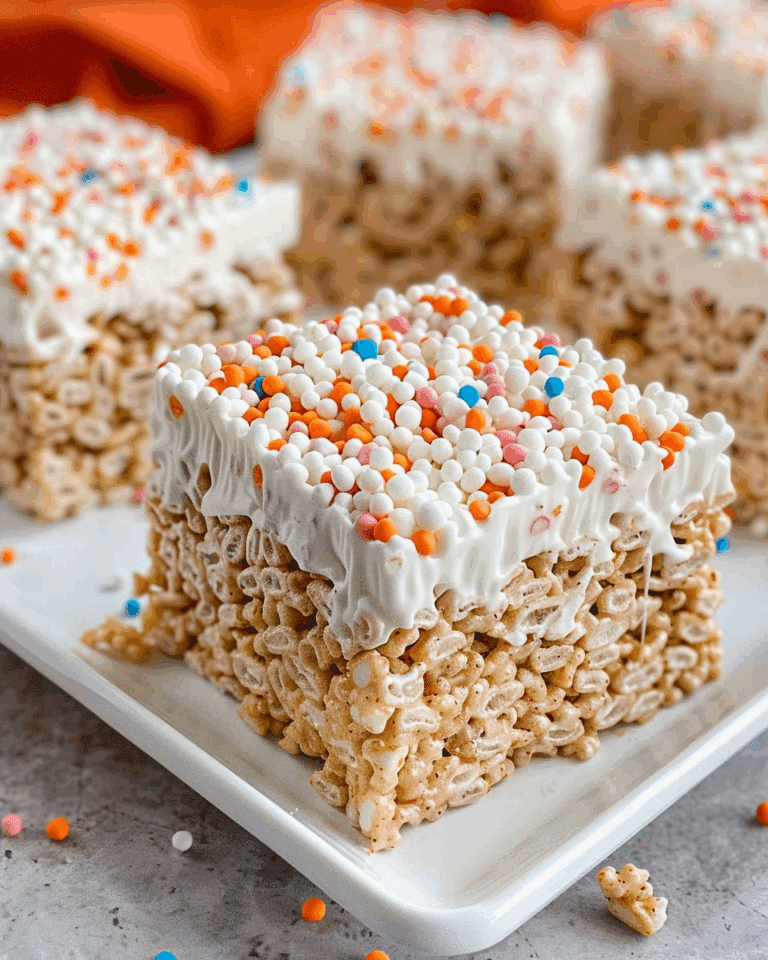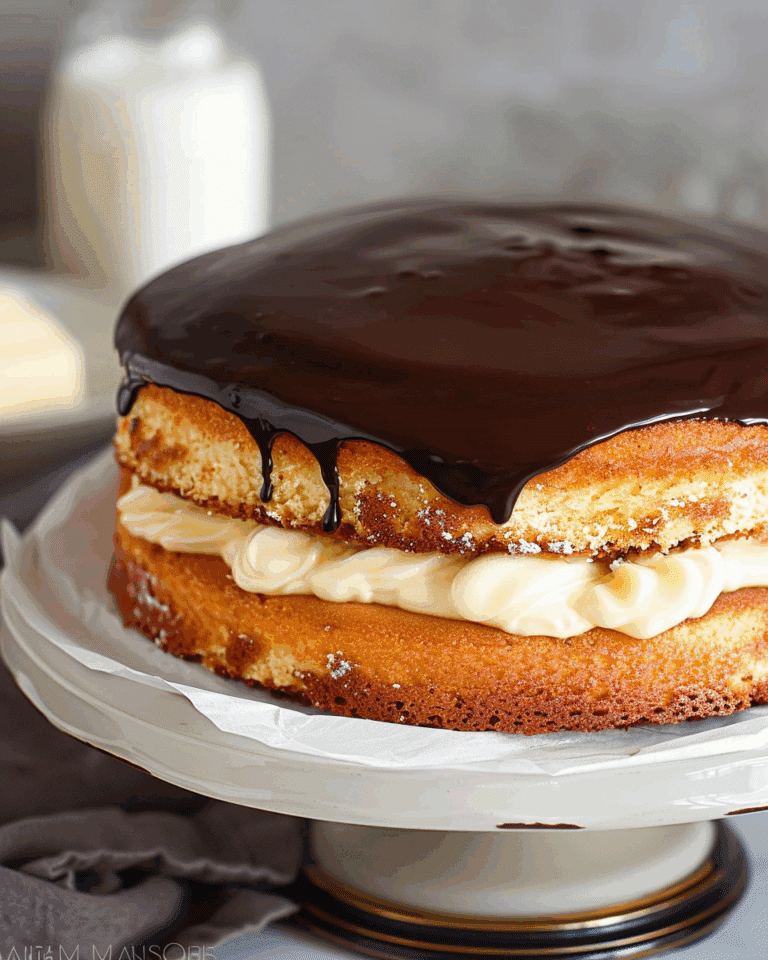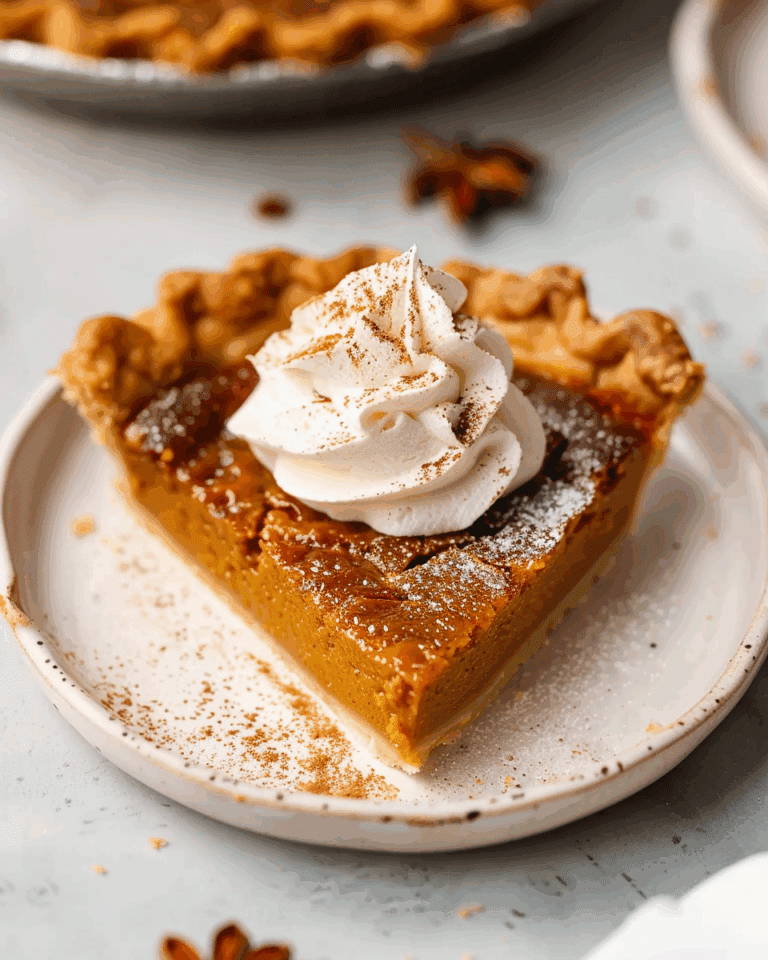If you have a soft spot for European desserts that are as stunning as they are delicious, then you are in for a treat with the Karpatka – Polish Carpathian Mountain Cream Cake Recipe. This dessert is a charming Polish classic named after the Carpathian Mountains, with its distinctive, rustic choux pastry layers that beautifully resemble mountain peaks, generously filled with a luscious, vanilla-infused custard cream. Each bite offers the perfect balance of light, airy pastry and silky smooth cream, making it an absolute showstopper for any occasion or cozy afternoon gathering. I’ve made this recipe countless times, and it never fails to bring smiles and that satisfied sigh of pure delight!
Ingredients You’ll Need
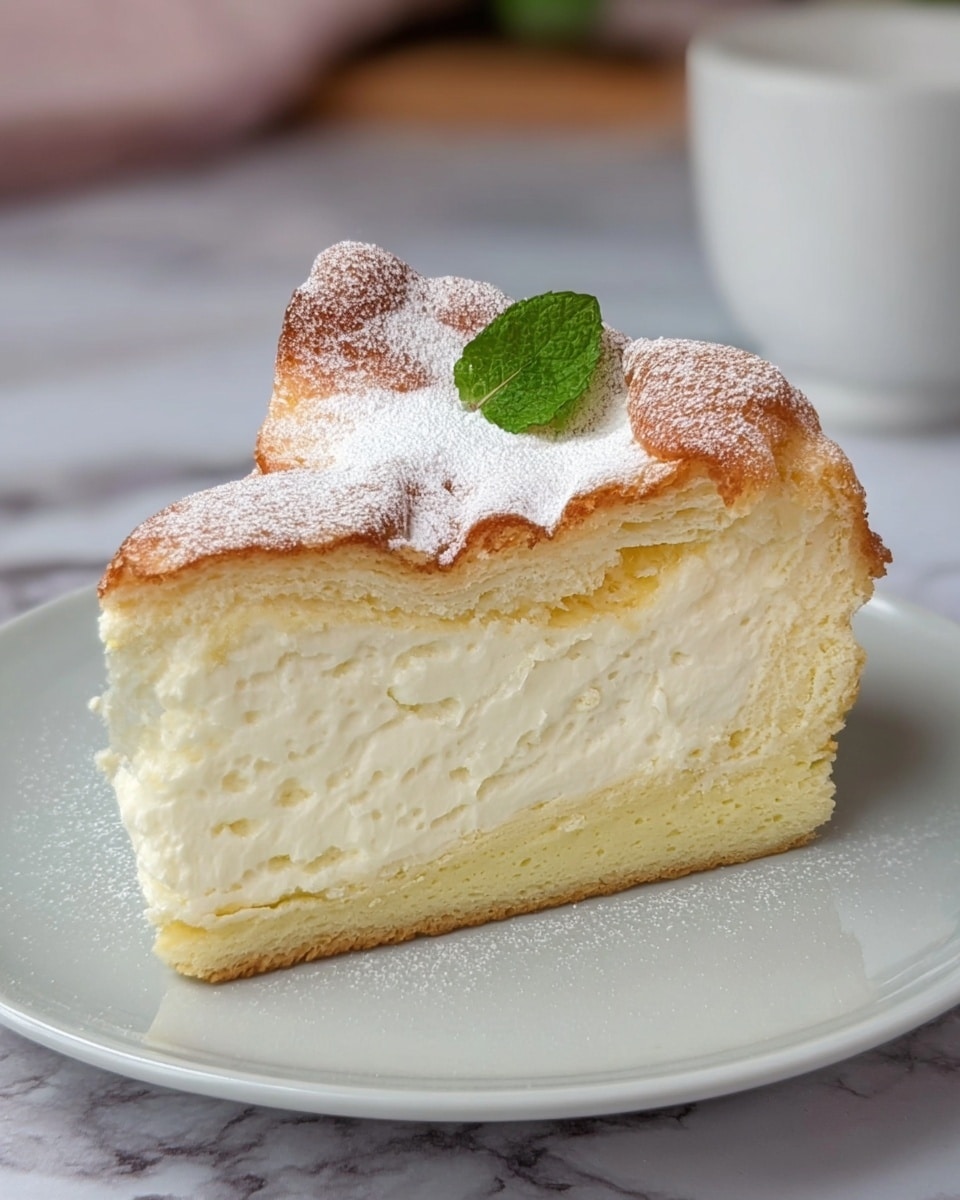
What makes the Karpatka – Polish Carpathian Mountain Cream Cake Recipe truly special is the simplicity of its ingredients, each contributing to the cake’s unique texture and flavor. You’ll be working mostly with pantry staples, but their quality and the way they come together will elevate this cake to something magical.
- Milk (60 ml for dough, 500 ml for cream): Provides moisture for the dough and the base for the custard cream.
- Water (65 ml): Helps achieve the perfect choux pastry texture by steaming during baking.
- Butter (50 g for dough, 160 g for cream, room warm): Adds richness and silkiness to both the dough and cream.
- Eggs (2 for dough, 2 for cream): Bind the dough and help thicken the custard to a luscious texture.
- Flour (75 g): Creates the structure of the dough, giving it that iconic “mountainous” look.
- Salt (1/4 tsp): Balances the flavors, making the sweet elements stand out even more.
- Sugar (120 g for cream): Sweetens the custard just right without overpowering the delicate balance.
- Cornstarch (40 g): Thickens the vanilla custard to a creamy perfection.
- Ground vanilla bean (a pinch): Adds a fragrant warmth and depth to the cream.
- Powdered sugar (for dusting): Perfect finishing touch for that snowy mountain look.
How to Make Karpatka – Polish Carpathian Mountain Cream Cake Recipe
Step 1: Prepare the Dough
Start by lining the base of your springform pan with baking paper to ensure the cake lifts easily later. Melt butter together with water, milk, and salt, bringing it to a gentle boil. This step infuses the dough with moisture and richness, which is essential for that tender yet structured pastry. Remove from heat and quickly stir in the flour all at once, stirring vigorously until you get a smooth dough that pulls away from the pan. Return it to heat for a minute or two to dry the dough slightly, which helps create the right consistency for your choux pastry. Finally, beat in eggs one at a time, making sure the dough is glossy and spreadable but not runny—think of it like soft peaks that cling to your spoon.
Step 2: Bake the Cake Layers
Divide the dough in two and spread each portion into an even circle in your springform pan. These slightly uneven layers are what create the mountain-like peaks after baking, which is the signature look of Karpatka. Bake each layer at 374 °F (190 °C) for about 25 minutes until golden and puffed. Remember, don’t open the oven during baking, or your layers might collapse. Once baked, set them aside to cool completely.
Step 3: Make the Cream Filling
Whisk together eggs, sugar, and cornstarch until smooth, then whisk in milk. Heat gently on the stove, stirring constantly until thickened into a custard. This part is where patience pays off because you want a silky, lump-free custard that forms the luscious heart of your cake. After adding the vanilla, cool the custard to room temperature, stirring occasionally to prevent a skin from forming. Then, beat softened butter until light and fluffy before folding in the custard a little at a time to create a smooth and rich cream filling. The combination of butter and custard makes the cream velvety and indulgent.
Step 4: Assemble Your Karpatka Cake
Line your springform tin again and place one cake base inside. Spread the entire cream filling evenly on top, smoothing it out gently. Then, crown your cake with the second baked layer and press lightly to combine. Chill your masterpiece for at least 3 hours, allowing the cream to set and the flavors to meld beautifully. When ready to serve, carefully remove the springform rim and give the cake a generous dusting of powdered sugar, reminiscent of snowy mountain peaks.
How to Serve Karpatka – Polish Carpathian Mountain Cream Cake Recipe
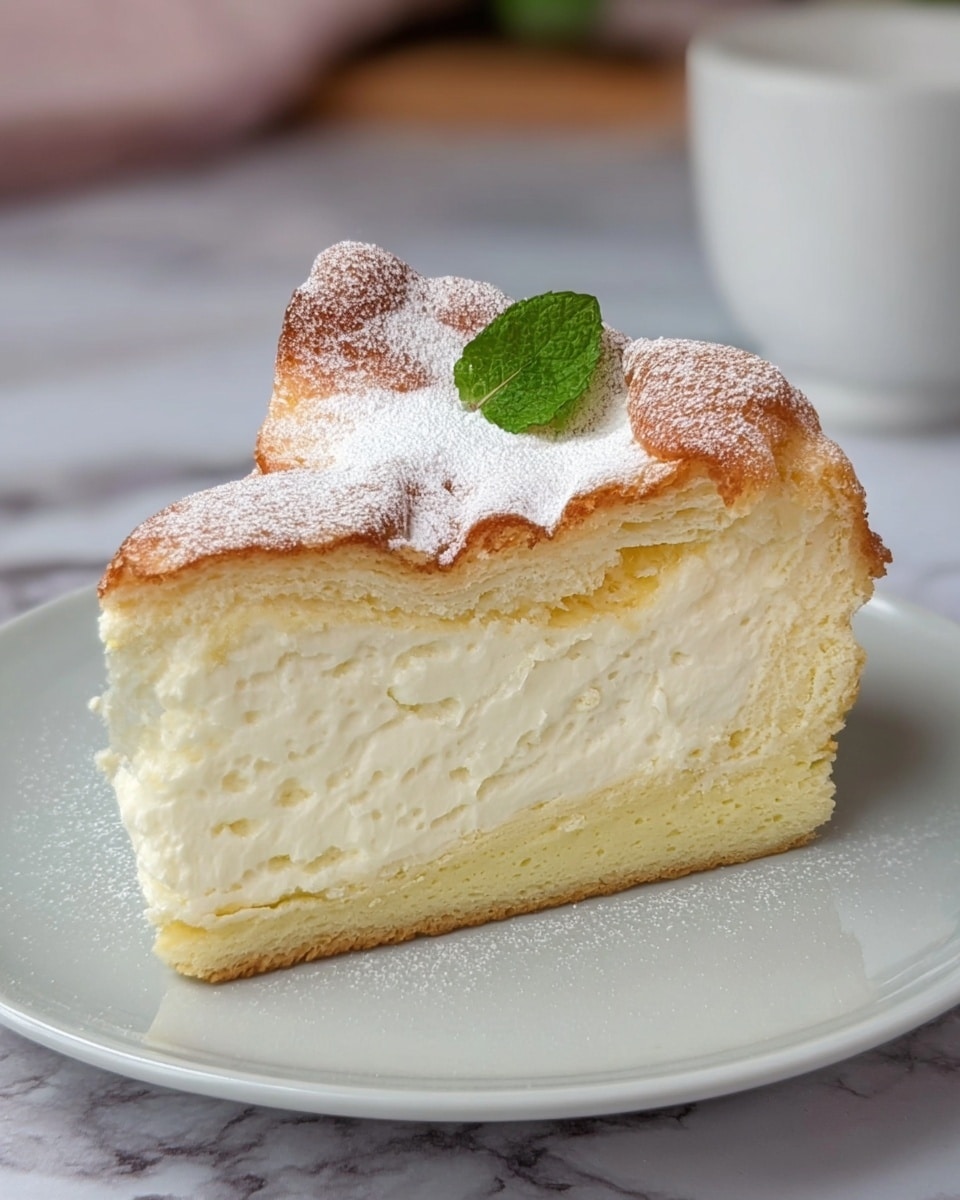
Garnishes
The classic powdered sugar dusting is not just decorative—it adds a subtle sweetness and a whimsical, snowy effect that visually ties back to the Carpathian Mountains. For an extra touch, consider adding fresh berries or a sprig of mint. These fresh elements contrast perfectly with the creamy richness, adding a pop of color and lightness.
Side Dishes
This cake pairs wonderfully with a warm beverage like a rich coffee or aromatic black tea. The slight bitterness of these drinks cuts through the creaminess of the Karpatka, balancing every bite. For a special occasion, serve alongside a berry compote or a scoop of vanilla bean ice cream to celebrate the flavors even more extravagantly!
Creative Ways to Present
For a rustic yet elegant look, serve Karpatka in thick slices on wooden or ceramic platters that highlight its delicate, mountainous texture. You can also dust the powdered sugar through a stencil for added design, or even drizzle a bit of melted dark chocolate to create a contrast with the pale cream. Miniature versions baked in smaller pans make adorable individual servings at parties and add a playful twist to the classic presentation.
Make Ahead and Storage
Storing Leftovers
Karpatka is best enjoyed fresh within the first two days to fully appreciate the contrasting textures of crisp pastry and creamy filling. Store leftovers airtight in the fridge to keep the cream safe and maintain as much texture as possible. Be aware that the choux pastry layers will soften over time as they absorb moisture from the cream.
Freezing
While freezing is possible, it’s not recommended for Karpatka because the cream and pastry textures change after thawing. If you must freeze it, wrap tightly to avoid freezer burn and thaw in the fridge overnight. Expect a softer overall texture once defrosted.
Reheating
This creamy cake is best served cold and not reheated, as warming will cause the cream to lose its smoothness and the pastry to become soggy. If you want a warm dessert, try pairing it with hot coffee or tea instead.
FAQs
What makes the Karpatka cake look like mountains?
The distinctive “mountainous” look comes from spreading the choux pastry dough unevenly before baking. As it bakes, the dough puffs and cracks, creating the rugged, peak-like appearance that resembles the Carpathian Mountains, giving the cake its unique charm.
Can I make the cream ahead of time?
Yes! The custard cream can be prepared in advance and stored in the fridge. Make sure to bring it to room temperature and re-whip with the butter before assembling to ensure a fresh, fluffy texture.
Do I need a springform pan for this recipe?
A springform pan is highly recommended for easy removal and neat presentation since this cake has a soft cream filling that can be tricky to handle otherwise.
Is there a gluten-free version of Karpatka?
While traditional Karpatka uses wheat flour, you can experiment with gluten-free flours designed for choux pastry. Just keep in mind that texture and rise may differ slightly.
How long does Karpatka keep in the fridge?
It stays fresh for about 2 days when stored properly in the fridge. Beyond that, the pastry softens and the texture changes, but it’s usually still safe to eat for a few more days.
Final Thoughts
If you’re craving a dessert that’s both impressive and heartwarming, then I wholeheartedly encourage you to try the Karpatka – Polish Carpathian Mountain Cream Cake Recipe. Its beautiful, rustic look paired with that dreamy vanilla cream filling is sure to become a beloved staple in your baking repertoire. Happy baking, and most importantly — enjoy every delicious bite!
Print
Karpatka – Polish Carpathian Mountain Cream Cake Recipe
- Total Time: 3 hours 10 minutes
- Yield: 8 servings
Description
Karpatka is a traditional Polish dessert inspired by the Carpathian Mountains, featuring two layers of golden choux pastry filled with a rich, creamy vanilla custard. This classic cream cake offers a delightful contrast of light, airy pastry and smooth, buttery cream, perfect for celebrations or a special treat.
Ingredients
For the dough
- 60 ml milk
- 65 ml water
- 50 g butter, room warm
- 2 eggs, German size L
- 75 g flour
- 1/4 tsp salt
For the cream
- 500 ml milk
- 160 g butter, room warm
- 2 eggs
- 120 g sugar
- 40 g cornstarch
- 1 pinch ground vanilla bean
For dusting
- Powdered sugar
Instructions
- Prepare the dough base: Line a 20 cm springform tin with baking paper. In a small saucepan, combine butter cut into small pieces, water, milk, and salt. Bring to a boil briefly over medium heat, stirring constantly until the butter melts and the mixture boils.
- Make the choux dough: Remove the saucepan from heat, immediately add the flour all at once, and stir vigorously with a wooden spoon until a smooth dough forms. Return the pan to high heat and cook the dough for 1-2 minutes, stirring continuously until it forms a lump and leaves a white skin on the pan’s base.
- Cool and mix in eggs: Transfer the hot dough to a mixing bowl and let it cool to lukewarm. Beat in eggs one at a time; whisk the last egg separately and add gradually until the dough is shiny and forms peaks on a wooden spoon. The dough should be spreadable, not runny or stiff.
- Bake the dough layers: Divide the dough into two equal portions. Spread one portion evenly in the prepared springform tin. Bake in a preheated oven at 190°C (374°F) for about 25 minutes until golden brown. Repeat with the second portion. Allow both cake bases to cool completely.
- Prepare the cream custard: In a thick-bottomed saucepan, whisk eggs, sugar, and cornstarch into a lump-free mixture. Stir in milk and heat over medium heat, stirring constantly until the mixture boils and thickens into custard. Continue cooking for 2-3 minutes while stirring. Stir in vanilla and cool to room temperature occasionally stirring.
- Make the cream filling: Beat softened butter for about 5 minutes until light and creamy. Gradually add the cooled custard in batches, beating well each time until a smooth, homogeneous cream forms.
- Assemble the Karpatka: Line a springform tin with baking paper again. Place one cake base inside and spread all the cream evenly over it. Top with the second cake base, pressing down lightly.
- Chill and serve: Refrigerate the assembled cake for at least 3 hours to set. Remove from the tin before serving and dust the top generously with powdered sugar.
Notes
- The number of eggs needed for the dough may vary; add the last egg gradually to get the proper consistency.
- Spreading the choux pastry unevenly creates a distinctive mountainous texture after baking.
- Avoid opening the oven door during baking to prevent the cake base from collapsing; it’s done when golden brown.
- You may adjust the sugar amount in the cream to your liking; note that the dough is unsweetened.
- Both butter and custard should be at room temperature and similar warmth to mix smoothly without curdling.
- Karpatka tastes best within two days. The pastry softens over time but remains safe to eat.
- Prep Time: 20 minutes
- Cook Time: 50 minutes
- Category: Dessert
- Method: Baking
- Cuisine: Polish


